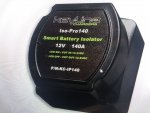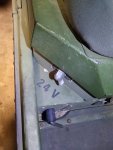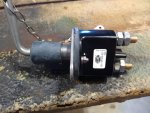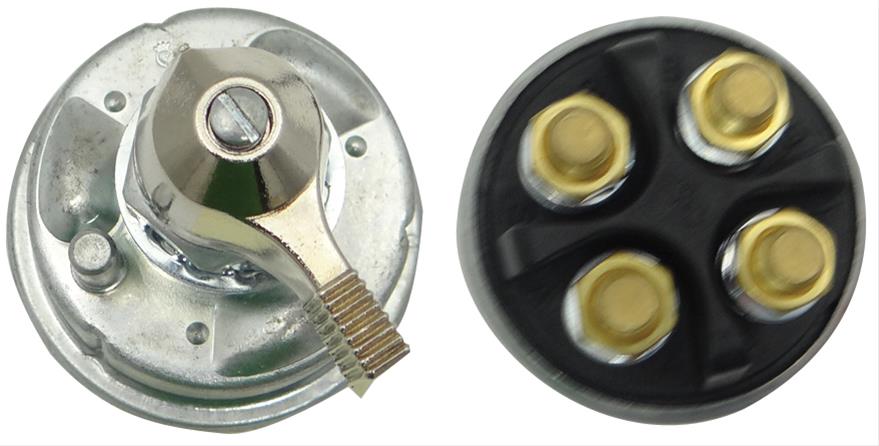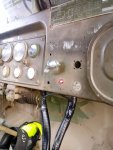
The design of the HumV 24 Volt system has a "devil in the battery box" The laws of electricity and the spoken word this Sunday from CAMO and witness by RWH. Today"s word is "TAP"
I have said this over and OVER, explained, drawn pictures, asked for owners to draw it out to see for themselves ...
It may seem simple... AND it would be ALL things being 24 Volts. When the need to supply the 12 Volts by TAP is when electrons start going in unwanted directions.
Simple thinking caps on


for those in the front row pews.
TAP is the clue word as in water. Think of this as a water source in these
magical batteries from another world. (not going to deal with the electrons yet.)
Each battery has a pressure of 12. Two batteries 12 + 12 = 24. If a connection is OPEN the water will not flow out.
Pressure can come from both ways to the 12 TAP. Ideally it would be balanced with 12 at the TAP and 24 to the truck front battery with the back battery grounded. You do have then installed that way ? Another black mark it the BIG BOOK if not.
Remember these are "magical battery" filled with holly water. Just believe it. I am sure I'am going some place bad after this.
Open the connection on the back battery (the ground) ... no water flow.... BUT the TAPPED connection has the potential to become the new ground.
Completing the path or flow from the front battery, should an operator attempt to (make any 24 connection) to the front battery. ie start, lights, honk, stop etc. A REVERSE FLOW is in effect back thru the TAP and associated equipment to ground. IE transmission control, radio, etc.
Substitute pressure with electron, so we need them going in the right directions. If one provides a TAP...That can become a two way street.
We know electronics are not happy with reverse current flow... electricity or water. LOL (and this could be a hint to failed "box" failures)
You say "I am smarter than the average bear" say it loud. I will disconnect the front battery and there! Done with it. OK... Leaving the 12 Volt stuff on and killing the back battery....NO Heaven NO anywhere. How many have done that.......... Do I hear an AMEN.

When one "half taps" the batteries one is going to have to open both ends of the circuit in these HumV's to eliminate any chance of a return path draining the rear battery or pulling a reverse current thru your fancy 12 volt equipment and damage (4l80 transmission parts too). Couple of ways... leave the TAP floating, another water term, OR break any two connections completely. Break the flow...Save the POWER
Do a little homework. Get your multi-meter out and use it ... to verify leakage, sneak currents and the like. It can be a devil of a problem.
There are duel disconnects >> It's only 90 bucks in the HumV collection basket to do the right thing. LOL Race cars need to disconnect EVERYTHING.
Free Shipping - Moroso Battery Disconnect Switches with qualifying orders of $109. Shop Battery Disconnect Switches at Summit Racing.

www.summitracing.com
Or two contactors / solenoids (cheaper) or a double pole jobbie (expensive) or the manual one above. Don't over think it. The one above will handle it... short of some BIG ASS winch running thur it. Now I am in trouble. Design at your own needs.
If the manual DUEL disconnect is for maintenance Great. Security build / put a lock box on it. If they want the rig that bad...sleep in it with S&W.
Praying this goes away too

. Holly Smokes, CAMO

Enjoy your day....................
